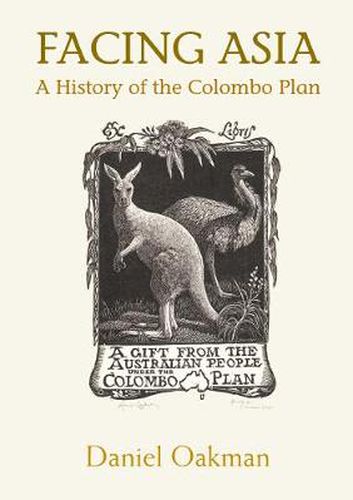Readings Newsletter
Become a Readings Member to make your shopping experience even easier.
Sign in or sign up for free!
You’re not far away from qualifying for FREE standard shipping within Australia
You’ve qualified for FREE standard shipping within Australia
The cart is loading…






‘No
nation can escape its geography’, warned Percy Spender, Australia’s Minister
for External Affairs, in 1950. With the immediate turmoil of World War II
over, communism and decolonisation had ended any possibility that Asia could
continue to be ignored by Australia. In the early 1950s, Australia embarked
on its most ambitious attempt to engage with Asia: the Colombo Plan. This
book examines the public and private agendas behind Australia’s foreign aid
diplomacy and reveals the strategic, political and cultural aims that drove
the Colombo Plan. It examines the legacy of WWII, how foreign aid was seen as
crucial to achieving regional security, how the plan was sold to Australian
and Asian audiences, and the changing nature of Australia’s relationship with
Britain and the United States. Above all this is the question of how
Australia sought to project itself into the region, and how Asia was
introduced into the Australian consciousness. In answering these questions,
this book tells the story of how an insular society, deeply scarred by the
turbulence of war, chose to face its regional future.
$9.00 standard shipping within Australia
FREE standard shipping within Australia for orders over $100.00
Express & International shipping calculated at checkout
‘No
nation can escape its geography’, warned Percy Spender, Australia’s Minister
for External Affairs, in 1950. With the immediate turmoil of World War II
over, communism and decolonisation had ended any possibility that Asia could
continue to be ignored by Australia. In the early 1950s, Australia embarked
on its most ambitious attempt to engage with Asia: the Colombo Plan. This
book examines the public and private agendas behind Australia’s foreign aid
diplomacy and reveals the strategic, political and cultural aims that drove
the Colombo Plan. It examines the legacy of WWII, how foreign aid was seen as
crucial to achieving regional security, how the plan was sold to Australian
and Asian audiences, and the changing nature of Australia’s relationship with
Britain and the United States. Above all this is the question of how
Australia sought to project itself into the region, and how Asia was
introduced into the Australian consciousness. In answering these questions,
this book tells the story of how an insular society, deeply scarred by the
turbulence of war, chose to face its regional future.